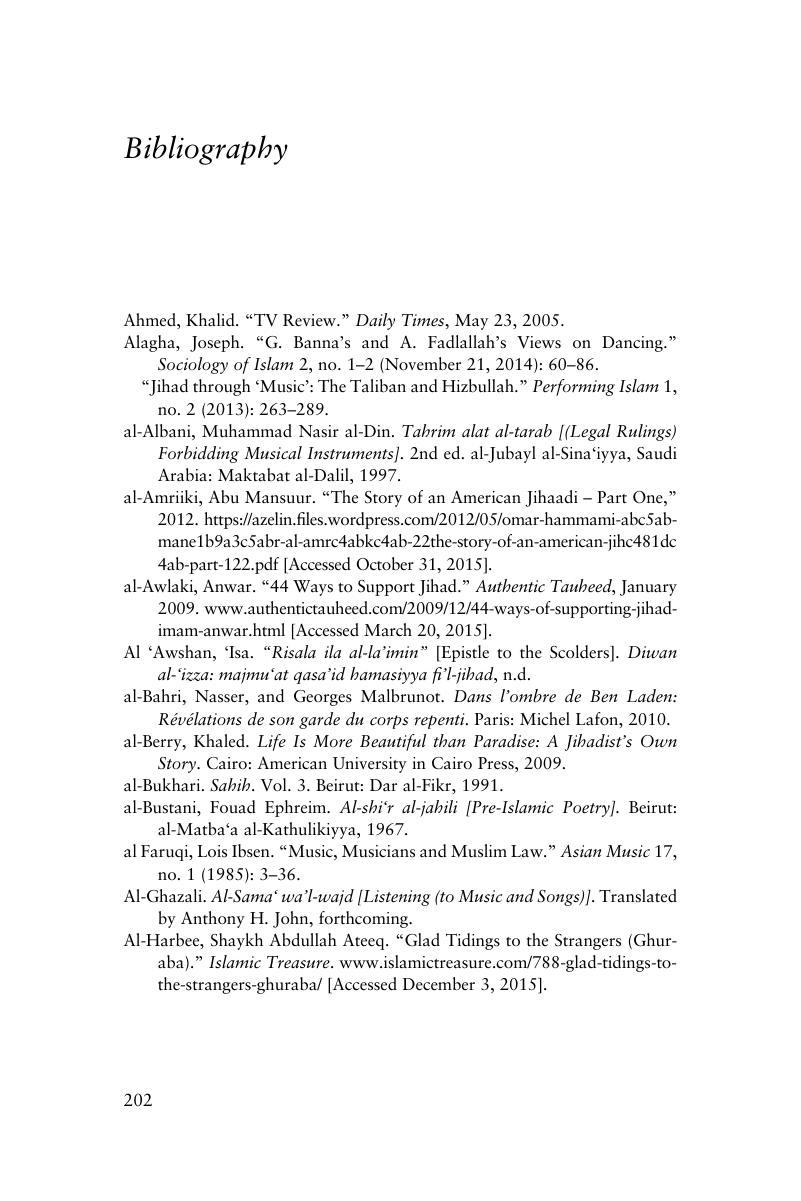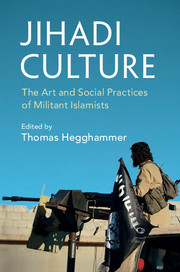Book contents
- Jihadi Culture
- Jihadi Culture
- Copyright page
- Dedication
- Contents
- Illustrations
- Tables
- Acknowledgments
- About the Contributors
- Introduction: What Is Jihadi Culture and Why Should We Study It?
- 1 Poetry in Jihadi Culture
- 2 A Cappella Songs (anashid) in Jihadi Culture
- 3 A Musicological Perspective on Jihadi anashid
- 4 The Visual Culture of Jihad
- 5 A History of Jihadi Cinematography
- 6 The Islamic Dream Tradition and Jihadi Militancy
- 7 Contemporary Martyrdom: Ideology and Material Culture
- 8 Non-military Practices in Jihadi Groups
- Bibliography
- Notes
- Index
- References
Bibliography
Published online by Cambridge University Press: 13 July 2017
- Jihadi Culture
- Jihadi Culture
- Copyright page
- Dedication
- Contents
- Illustrations
- Tables
- Acknowledgments
- About the Contributors
- Introduction: What Is Jihadi Culture and Why Should We Study It?
- 1 Poetry in Jihadi Culture
- 2 A Cappella Songs (anashid) in Jihadi Culture
- 3 A Musicological Perspective on Jihadi anashid
- 4 The Visual Culture of Jihad
- 5 A History of Jihadi Cinematography
- 6 The Islamic Dream Tradition and Jihadi Militancy
- 7 Contemporary Martyrdom: Ideology and Material Culture
- 8 Non-military Practices in Jihadi Groups
- Bibliography
- Notes
- Index
- References
Summary

- Type
- Chapter
- Information
- Jihadi CultureThe Art and Social Practices of Militant Islamists, pp. 202 - 220Publisher: Cambridge University PressPrint publication year: 2017

